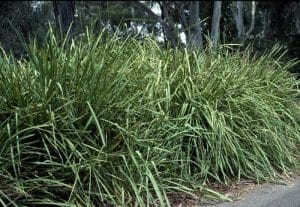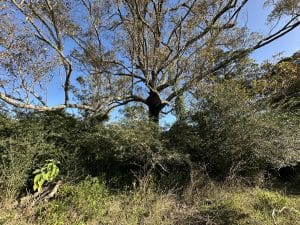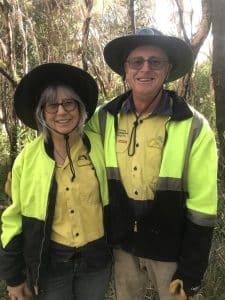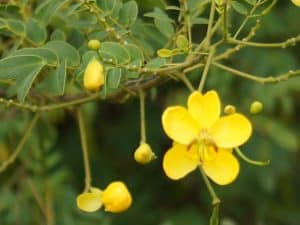Weedy Warnings- Passionfruit Weeds
We all know Passionfruit as the delicious fruit, but a variety of passionfruit species, including our beloved edible passionfruit Passiflora edulis, present a nasty weed problem in the bush. These are fast growing, big heavy vine weeds that smother native vegetation. Birds spread the seeds, and aren’t fussy about consuming the various unpleasant and somewhat toxic fruit of the non-edible species. If you grow passionfruit in your garden, please take all reasonable precautions to beat the birds to the fruit.
Major culprits in the Midcoast include escaped graft rootstock species Blue Passionfruit Passiflora caerulea and White Passionfruit Passiflora subpeltata – both inedible nasties that sucker aggressively and are difficult to eliminate. Please avoid grafted passionfruit, and if you are unlucky enough to already have a grafted specimen, consider removing it, or be very vigilant about removing shoots from below the graft
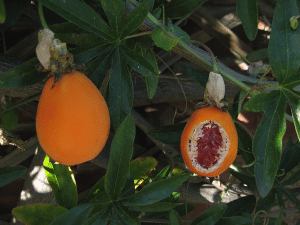
Blue Passionfruit fruits. Image: Passionflow
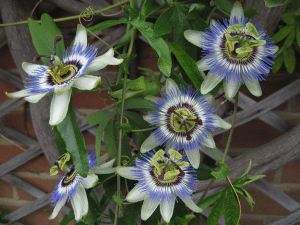
Blue Passionflower flowers and leaves. Image: Passionflow
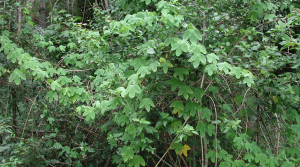
White Passionflower. Image: Sheldon Navie
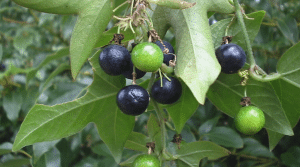
White Passionflower- Immature and mature fruit. Image: Sheldon Navie
Corky Passionfruit Passiflora suberosa is a menace because of its extraordinarily rapid generation time from fruit to fruit and its rapid growth – if found it should be removed as a priority.
A newer passionfruit weed in limited distribution is Passiflora morifolia – if you think you have this plant, please send a photo to Midcoast Council Weed Biosecurity Officer Terry Inkson terry.inkson@midcoast.nsw.gov.au
As fast growing vine weeds, Passionfruit weeds are worthy of prompt attention.
Small plants of all species will hand pull or dig out successfully if you are careful – remove very gently, being mindful of forking lateral roots. Passionfruit weeds will easily break when hand pulled and will sucker aggressively.
The treatment of choice for larger plants is stem scrape application of neat glyphosate – use a dripper applicator (proprietary applicator or fine ended perm solution bottle) and always add dye so you can see where it’s going. Use a pair of secateurs or other sharp implement to make long scrapes exposing the cambium layer, being careful not to break or ringbark the stem. Ensure to dose as close to the base as possible, and remember that larger, longer plants will need a higher dose with longer and more scrapes – a good scrape near the base and a good long scrape on each major stem should do the trick, but as always, follow up, follow up & follow up, and watch out for suckers. Passionfruit suckers, particularly “blue” and “white” passionfruit, are very difficult to dig out, and are best stem scraped.
Off-target warning! Get to know our local native Passionfruit Passiflora herbertiana – this pretty and (somewhat!) edible species can sometimes be pretty rampant – if it’s behaving in a weedy fashion on native shrubs or small trees, hit it with a bit of pruning, but please don’t kill it.


